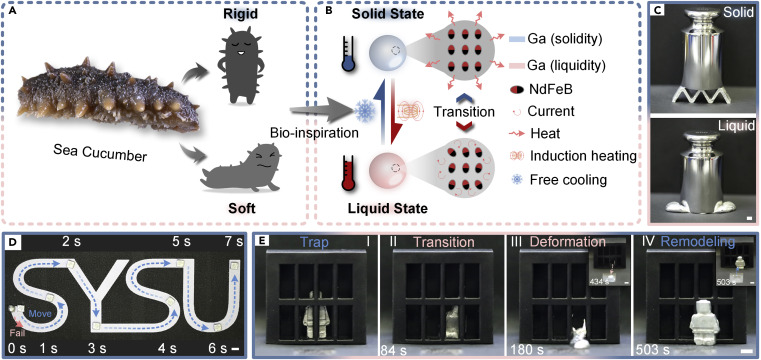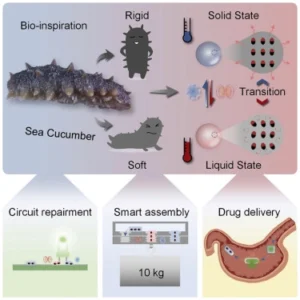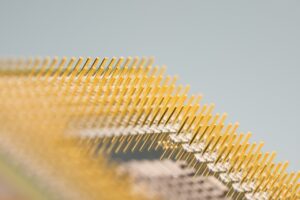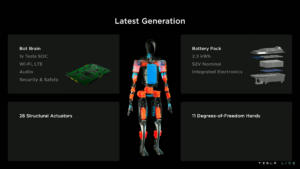
Scientists have developed a miniature robot that can melt and resolidify on command, allowing it to easily escape from confined spaces.
The researchers behind the study, published in the journal Matter (DOI: 10.1016/j.matt.2022.12.003), presented a robot created using a composite of low melting point metals. The robot is capable of morphing shape, moving quickly, being controlled easily, and carrying many times its own body weight as it is made of metal microparticles known as magnetoactive phase transitional matter.
The phase-shifting robot was created by embedding microscopic chunks of magnetic neodymium, boron and iron into liquid gallium and allowing it to solidify. This gives the robot shape-shifting abilities similar to the T-1000 from the movie “Terminator 2.”
By using magnets to command the robot to melt, researchers were able to record the robot transforming into an amorphous puddle to slither through the bars of a cage before reconstituting itself on the other side.

The process of melting the robot was achieved through magnetic induction, where a moving magnet sets up an electrical current inside the robot, melting the gallium and causing the magnetic elements suspended inside to be drawn towards the magnet.
This robot, developed by Carmel Majidi at Carnegie Mellon University in Pennsylvania and his colleagues, is not only able to shape-shift but also become stronger or weaker by alternating between being a liquid and a solid. The millimeter-sized robot was made from a mix of the liquid metal gallium and microscopic pieces of a magnetic material made of neodymium, iron and boron.
When solid, the material was strong enough to support an object 30 times its own mass. By putting it near magnets, the researchers were able to exert forces on the tiny magnetic pieces in the robot, moving them and deforming the surrounding metal in different directions.
The team demonstrated the robot’s abilities by having it carry and solder a small light bulb onto a circuit board. Then the scientists demonstrated the robot’s ability to approach an object, melt over it, and drag it out inside an artificial stomach using magnetic fields.
The team was inspired by the adaptability of sea cucumbers, which can change their consistency to protect themselves and carry heavier loads. They believe their robot has potential for many medical and technological applications, as it has already demonstrated in the example tasks.

Li Zhang at the Chinese University of Hong Kong suggests that these shape-shifting robots can be utilized for emergency repairs in scenarios where human or conventional robotic hands are not feasible.
He gives an example of how a liquid robot could take the place of a missing screw on a spacecraft by flowing into the spot and then solidifying. Zhang also states that for the usage of these robots inside living stomachs, researchers must first create methods for accurately tracking the robot’s position during the procedure to guarantee the patient’s safety.
To showcase the robot’s shape-shifting abilities, they formed it into a Lego mini figure and allowed it to escape from a cage by flowing out between the bars in its liquid form. The robot then solidified into its original shape once it reached a mold. This can be seen in the following YouTube video:






